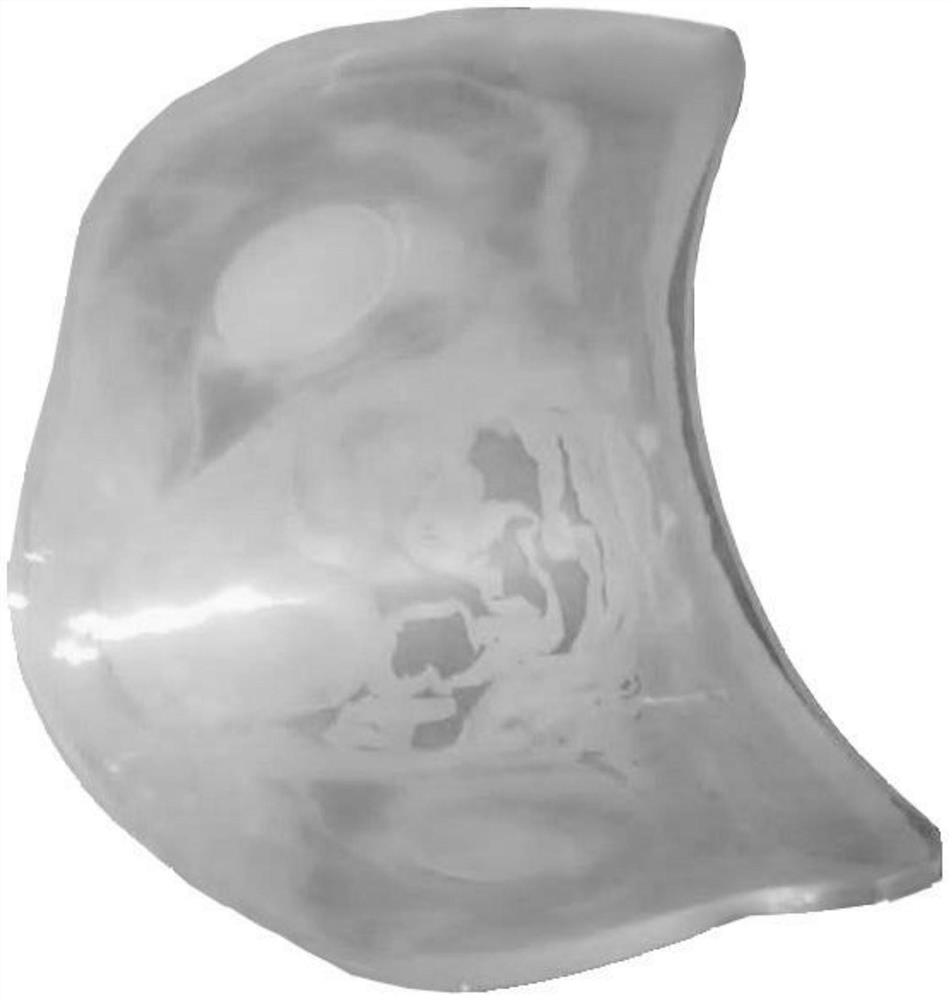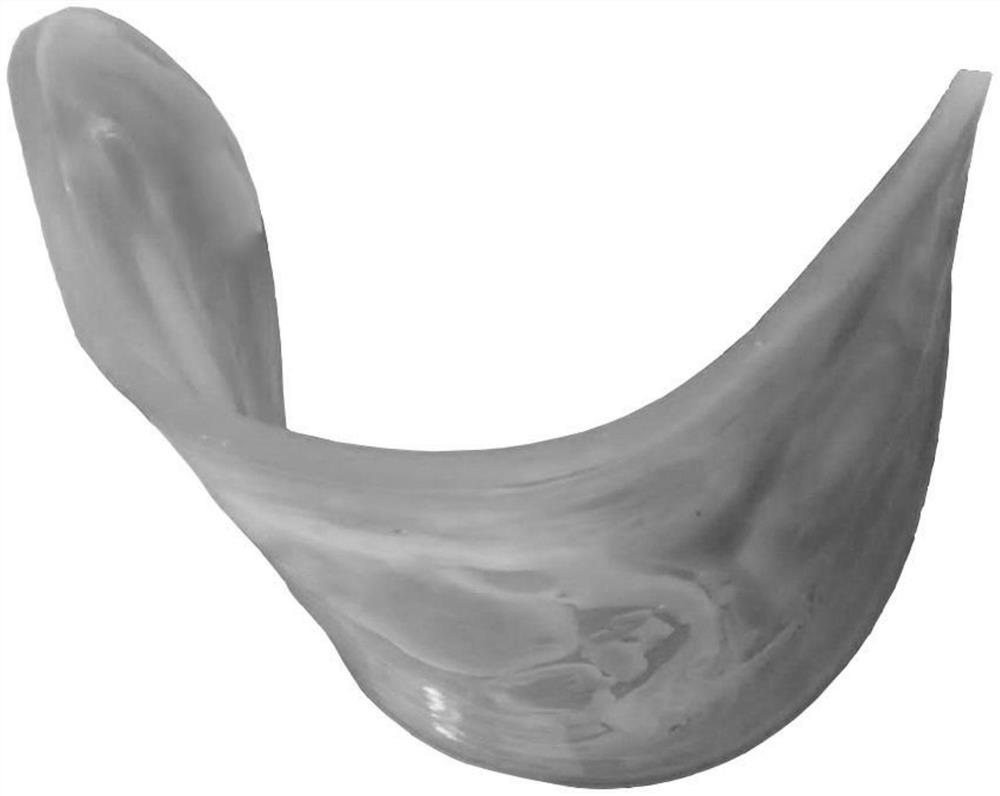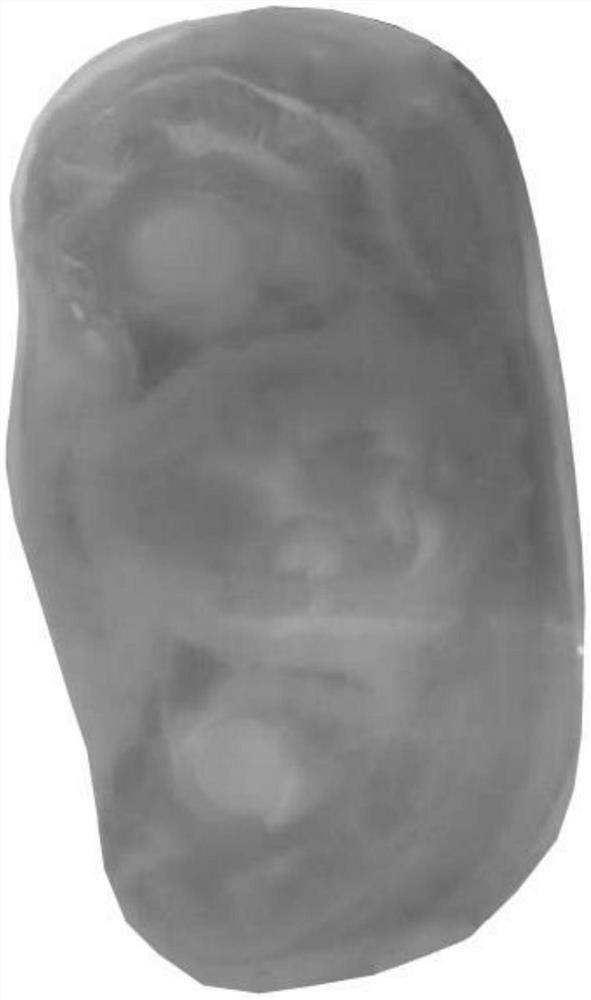Soft-embedded cross-section specimen and its preparation method
A fabrication method and cross-section technology, which are applied to the field of soft-embedded cross-section specimens and their fabrication, can solve the problems of inconvenient pointing to the specimen, inconvenient storage, inconvenient use, etc. Effect
- Summary
- Abstract
- Description
- Claims
- Application Information
AI Technical Summary
Problems solved by technology
Method used
Image
Examples
Embodiment 1
[0029] The embedding agent of the present embodiment comprises the following components in parts by mass:
[0030] 100 parts of UV curable resin, 0.05 part of initiator, 0.04 part of anti-yellowing agent.
[0031] The UV curable resin is urethane acrylate.
[0032] The initiator is tert-butyl peroxide.
[0033] Anti-yellowing agent is phosphite.
[0034] The hardness of the cured UV curable resin is Shore A60.
[0035] The preparation method of the soft embedding section specimen of the present embodiment comprises the following steps:
[0036] 1) Antiseptic treatment: select human specimens that are complete, without trauma, without fractures, and without lesions, and perfuse the specimens with formalin with a volume fraction of 15%. Malin penetrated into various parts of the specimen, and finally put it into 8% formalin preservation solution for 3 months to obtain the specimen after antiseptic treatment.
[0037] 2) Freezing: Put the specimen after the antiseptic treatm...
Embodiment 2
[0047] The embedding agent of the present embodiment comprises the following components in parts by mass:
[0048] 100 parts of UV curable resin, 0.1 part of initiator, 0.03 part of anti-yellowing agent.
[0049] The UV curable resin is polyester acrylate.
[0050] The initiator is 1-hydroxy-cyclohexyl-phenylmethanone.
[0051]The anti-yellowing agent is phosphorothioate.
[0052] The hardness of the cured UV curable resin is Shore A70.
[0053] The preparation method of the soft embedding section specimen of the present embodiment comprises the following steps:
[0054] 1) Antiseptic treatment: select human specimens that are complete, without trauma, fractures, and lesions, perfuse the specimens with 20% formalin, and infiltrate the formalin through large blood vessels (femoral artery, common carotid artery) to each part of the specimen, and finally soaked in 10% formalin preservation solution for 4 months to obtain the specimen after antiseptic treatment.
[0055] 2) F...
Embodiment 3
[0065] The embedding agent of the present embodiment comprises the following components in parts by mass:
[0066] 100 parts of UV curable resin, 0.5 part of initiator, 0.05 part of anti-yellowing agent.
[0067] The UV curable resin is polyether acrylate.
[0068] The initiator is Phosphate Acrylate 7112.
[0069] Anti-yellowing agent is phosphite.
[0070] The hardness of the cured UV curable resin is Shore A90.
[0071] The preparation method of the soft embedding section specimen of the present embodiment comprises the following steps:
[0072] 1) Antiseptic treatment: select human specimens that are complete, without trauma, without fractures, and without lesions, perfuse the specimens with 18% formalin, and infiltrate the formalin through large blood vessels (femoral artery, common carotid artery) to each part of the specimen, and finally soaked in 12% formalin preservation solution for 3 months to obtain the specimen after antiseptic treatment.
[0073] 2) Freezing...
PUM
| Property | Measurement | Unit |
|---|---|---|
| hardness | aaaaa | aaaaa |
| hardness | aaaaa | aaaaa |
| hardness | aaaaa | aaaaa |
Abstract
Description
Claims
Application Information
 Login to View More
Login to View More - R&D
- Intellectual Property
- Life Sciences
- Materials
- Tech Scout
- Unparalleled Data Quality
- Higher Quality Content
- 60% Fewer Hallucinations
Browse by: Latest US Patents, China's latest patents, Technical Efficacy Thesaurus, Application Domain, Technology Topic, Popular Technical Reports.
© 2025 PatSnap. All rights reserved.Legal|Privacy policy|Modern Slavery Act Transparency Statement|Sitemap|About US| Contact US: help@patsnap.com



